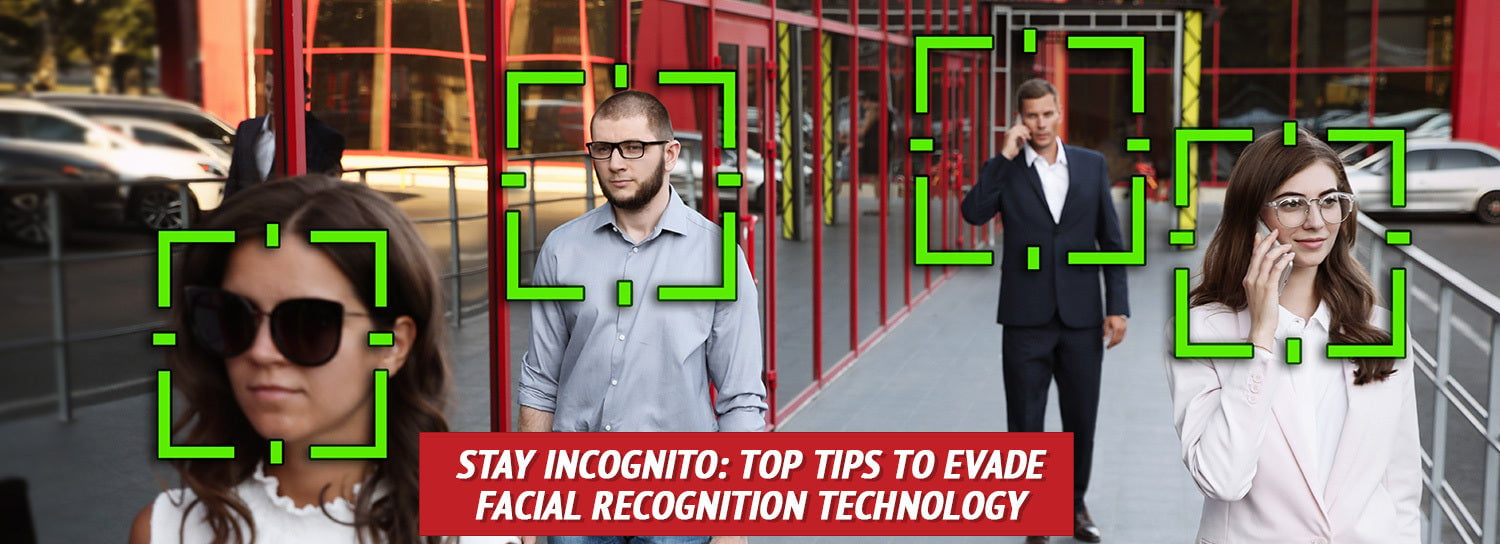
There are many things we do because we believe they make our lives easier. For example, it’s a lot quicker to access your phone using facial recognition than it is to put in a passcode or even a thumbprint.
The problem is that most people are unaware of how facial recognition is being used on a grand scale.
To put it simply, the government and law enforcement are utilizing facial recognition technology for security, which includes tracking your every move.
Think about it.
If your face appears in a facial recognition database (which, it probably does), anytime you go to an airport, a major concert venue, a retail establishment, or downtown in a metropolitan city, chances are you can easily be identified using security cameras.
This is a serious security concern and a huge invasion of privacy.
We aren’t the only ones who think so.
There is countless information about the dangers of facial recognition technology, as well as tips for tricking the technology in public.
Let me explain.
Just Assume Facial Technology Is Being Used

Most of us are familiar with facial technology simply because of our personal digital devices. We are sold on the idea that facial recognition is a security measure so a stranger can’t access our phone.
Long before it was an everyday thing, we saw facial recognition as something out of spy movies.
Now, it’s daily life, and in places you wouldn’t think.
If you think I’m exaggerating, you’re wrong.
[See Also: The Burden of Personal Cybersecurity Is on You]
For example, according to a report released back in 2016 by the Center on Privacy & Technology at Georgetown Law, “Half of American adults – more than 117 million people – are in a law enforcement face recognition network.”
That was 2016.
Facial recognition has become much more prevalent since then.
Just recently in March 2023, Americans discovered the FBI and government officials were using facial recognition all over the place without consent.
According to Gizmodo, “New documents revealed by the ACLU and shared with Gizmodo show the lengths FBI and Pentagon officials went to develop ‘truly unconstrained’ facial recognition capable of being deployed in public street cameras, mobile drones, and cops’ body cameras. The goal of the project, code-named ‘Janus’ after the Roman god with two opposing faces, was to develop highly advanced facial scanning tech capable of scanning people’s faces across a vast swath of public places, from subway cars and street corners to hospitals and schools. In some cases, researchers believed the advanced tech could detect targets from up to 1,000 meters away.”
So, if you’ve attended any major event in the last few years, such as a major league ball game or a concert in an arena, assume your face is in a database.
If you have gone to an airport, ridden on a subway, or walked down a busy street, assume your face is in a database.
If you downloaded photos and tagged yourself in photos on Facebook, assume your face is in a database.
Unless you have lived incognito for the last few years, assume your face is in a database.
The Problem with Facial Recognition
When facial recognition works to protect us from the bad guys, such as locating Bin Laden, we like it.
But when we sit back and think of how quickly it moves from security to an invasion of privacy, it gets scary.
For example, news broke in January that a mom was barred from entering Radio City Music Hall to watch a Rockettes show with her daughter’s Girl Scout troop.
Why? Because she was a lawyer at a firm that was currently engaged in litigation. Facial recognition identified her, and security refused to let her in. Of note, this lawyer mom was not even involved in that particular case.
Facial recognition is also being used to identify those the government deems “threats,” such as people who are caught on camera attending certain protests.
It’s also important to note that the technology isn’t perfect, and there have already been several cases of misidentification by law enforcement.
People have been wrongfully accused and arrested based on facial recognition technology because their facial features were similar to someone else’s.
[See Also: What Happened to Independence from Tyranny]
How to Avoid Facial Recognition Technology in Public

Once they have your faceprint (just like a fingerprint), they can find you wherever you go…unless you take steps to avoid facial recognition technology in public.
Rule number one is to say NO when you can. This means if you are asked permission to use facial recognition, say NO.
Unfortunately, in the US, they don’t have to ask permission or tell you it’s being used.
That’s why it is best to assume facial recognition technology is being used and take steps to trick it.
Your faceprint is likely already in a database. But that doesn’t mean you should just accept it and allow yourself to be tracked wherever you go.
Stay aware. Be on the lookout for security cameras and turn your face away from them whenever possible.
How to Avoid Facial Recognition Technology Online
It’s most likely too late to avoid facial recognition online. But here are some ways to make it harder for facial recognition tools to keep getting access to your faceprint.
Secure your faceprint and protect your privacy, friends.
In liberty,
Elizabeth Anderson
Preparedness Advisor, My Patriot Supply


